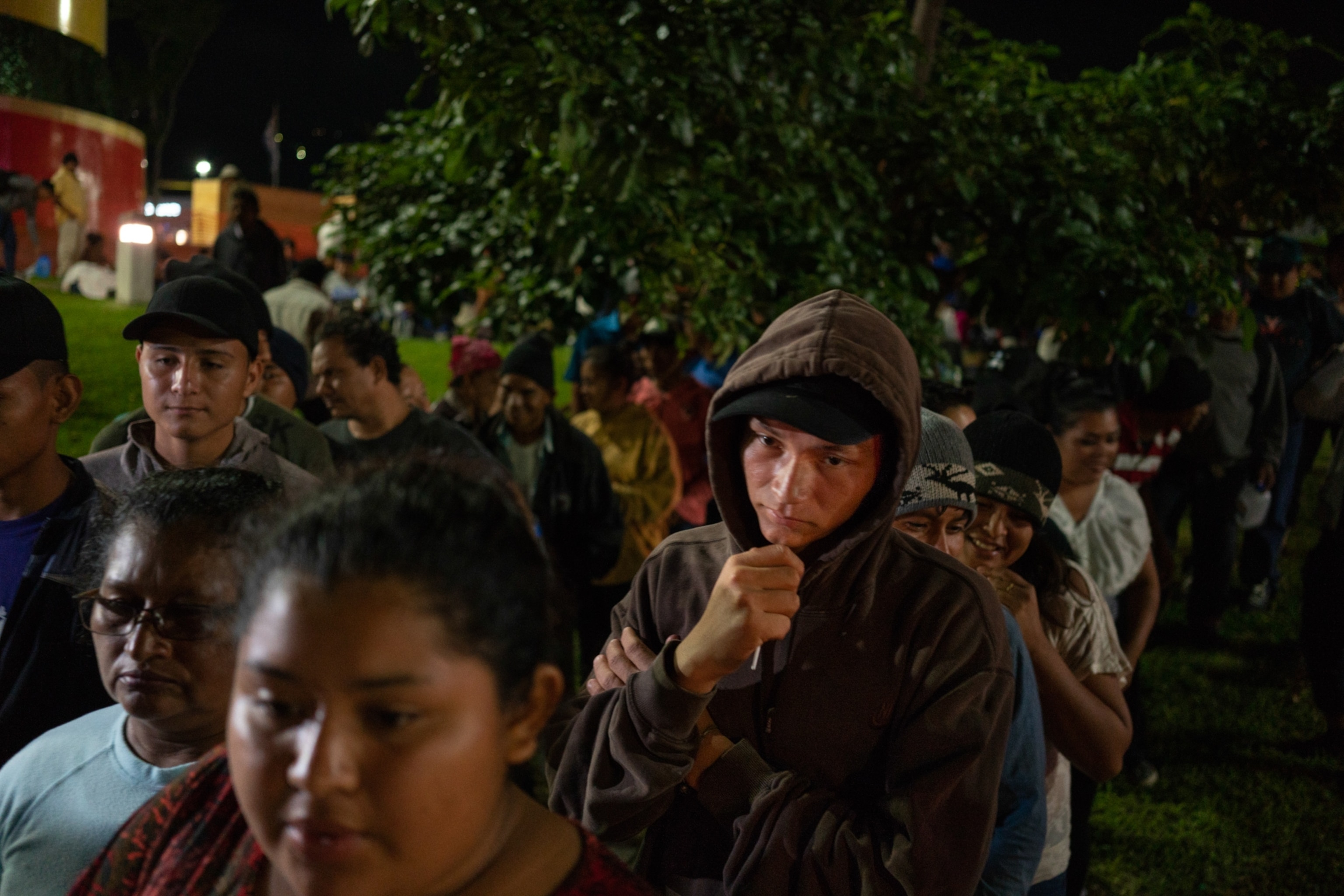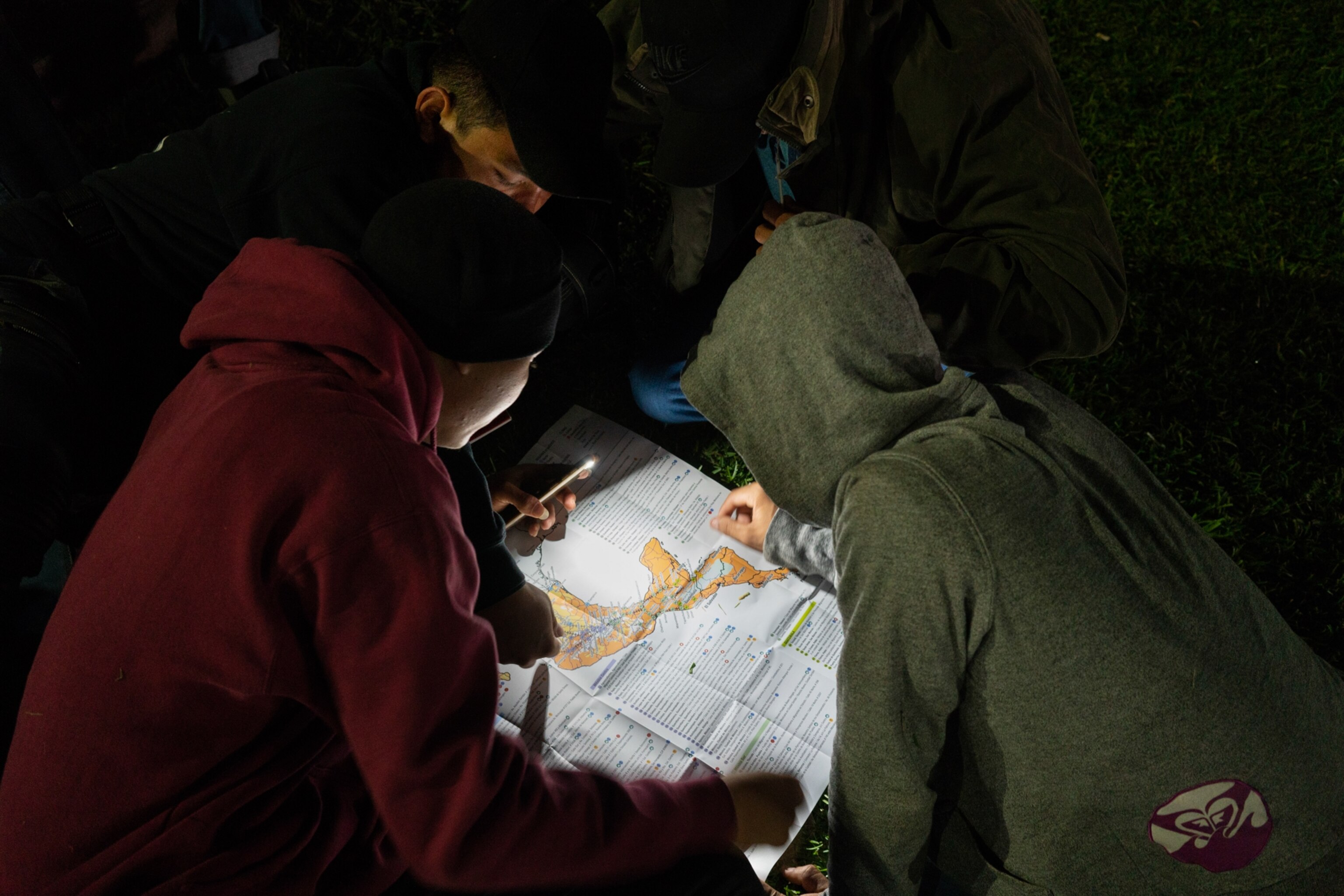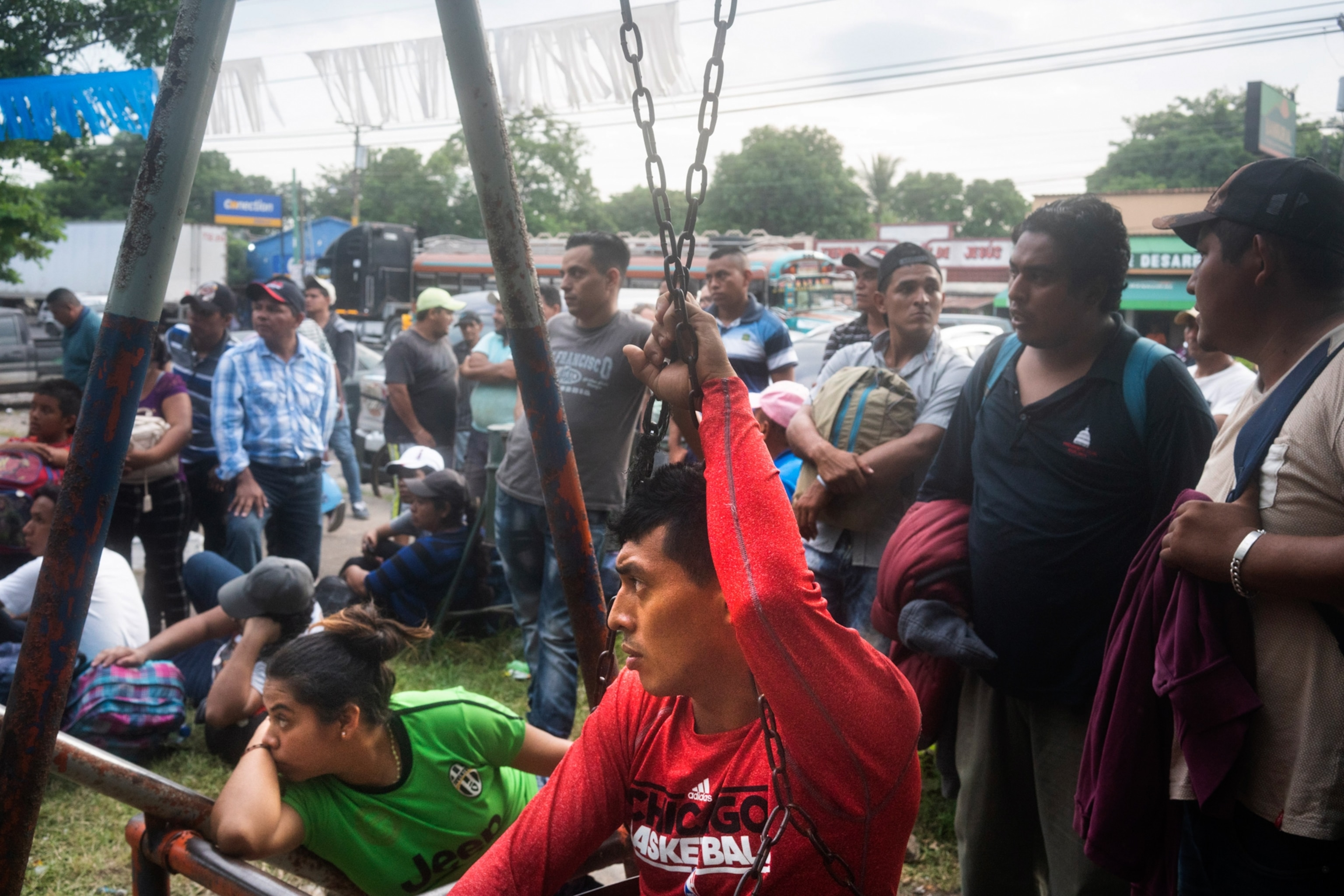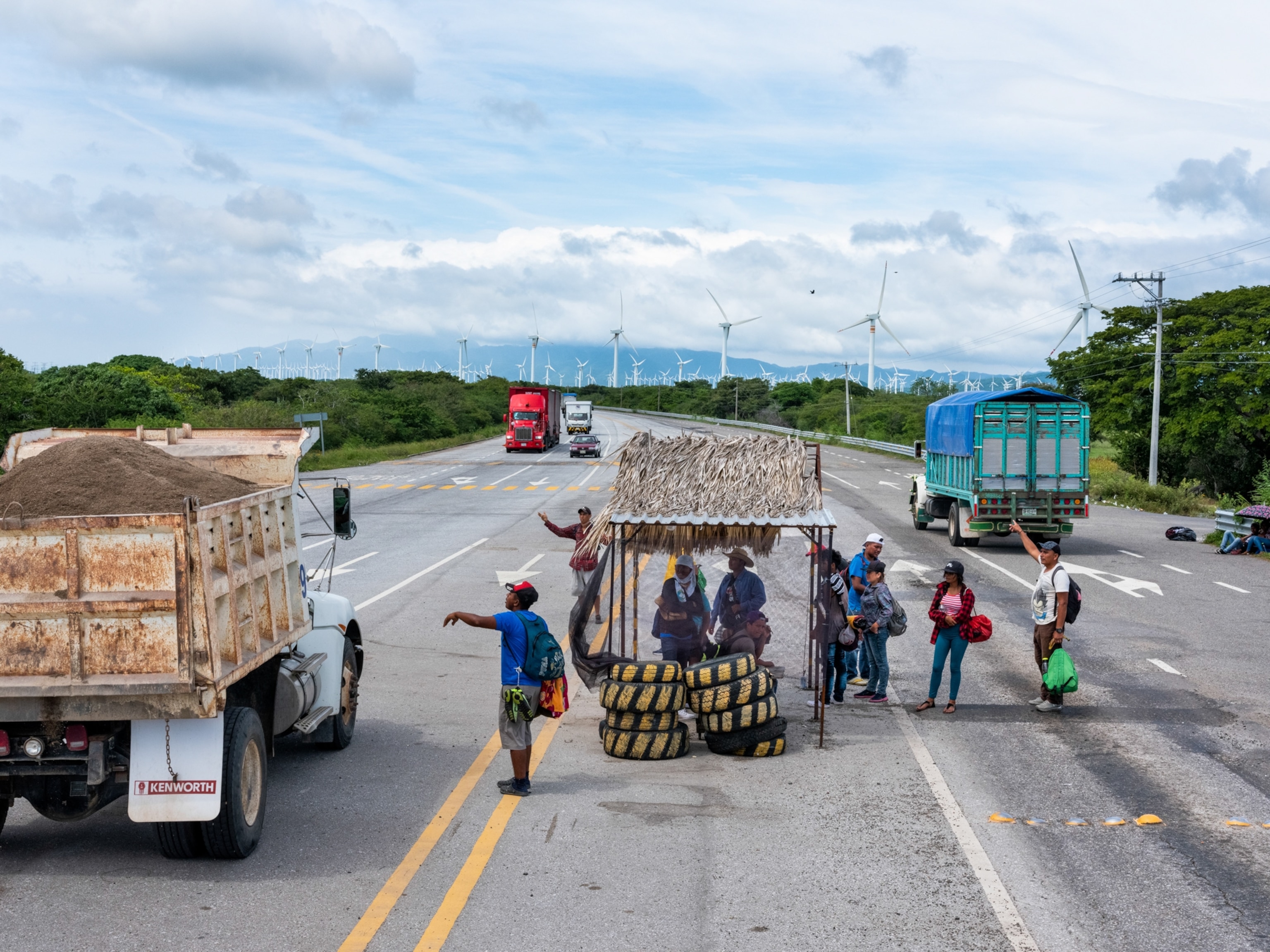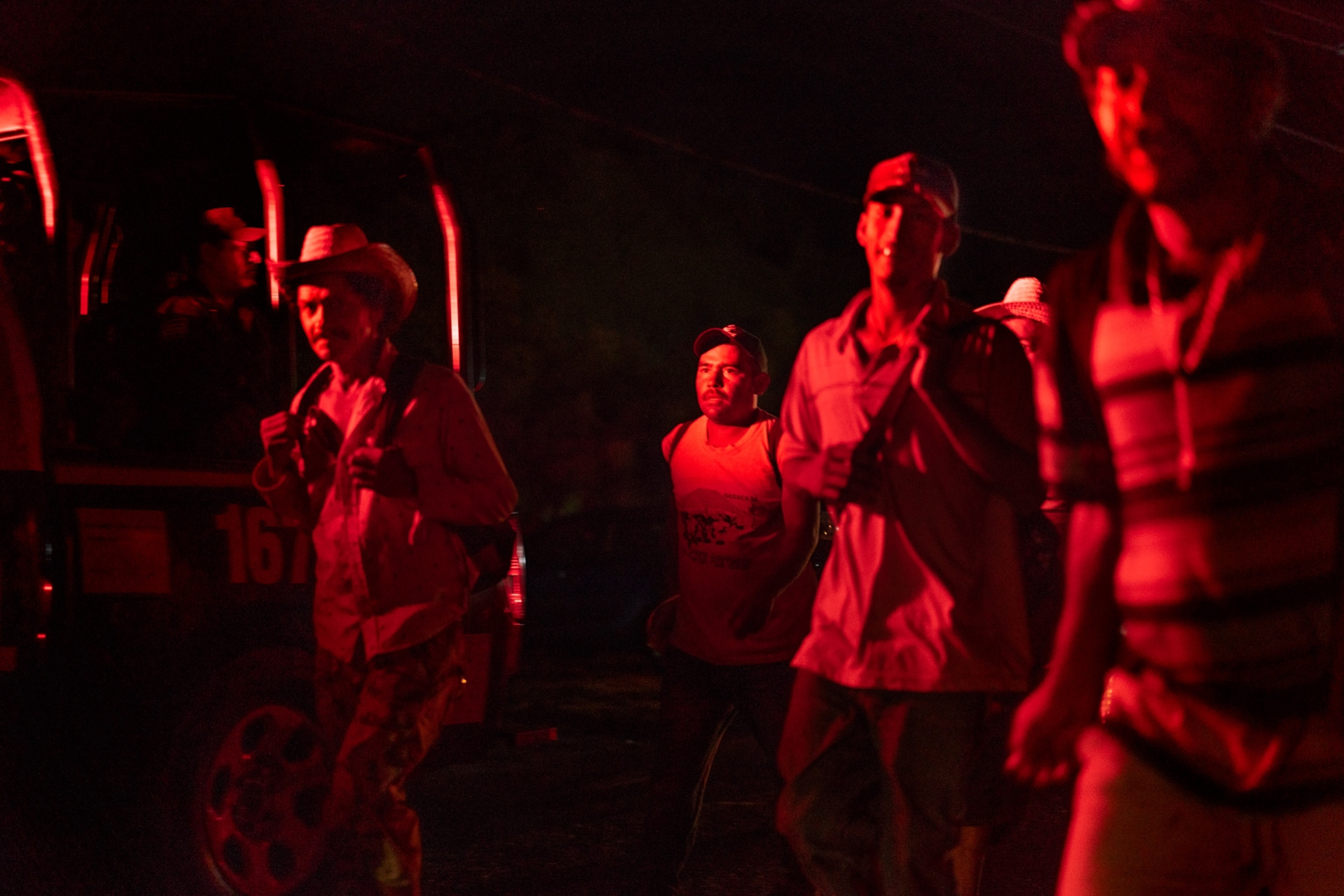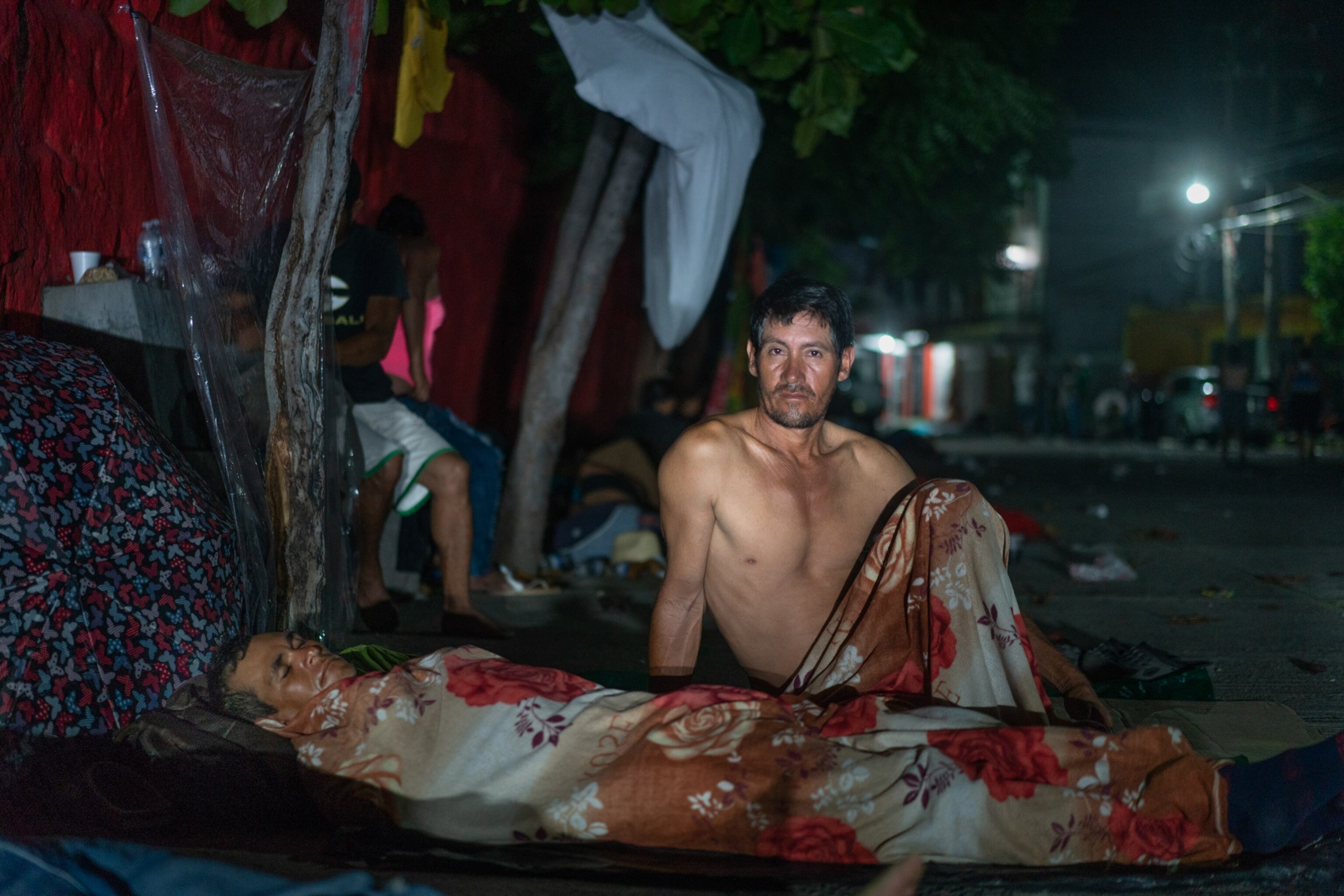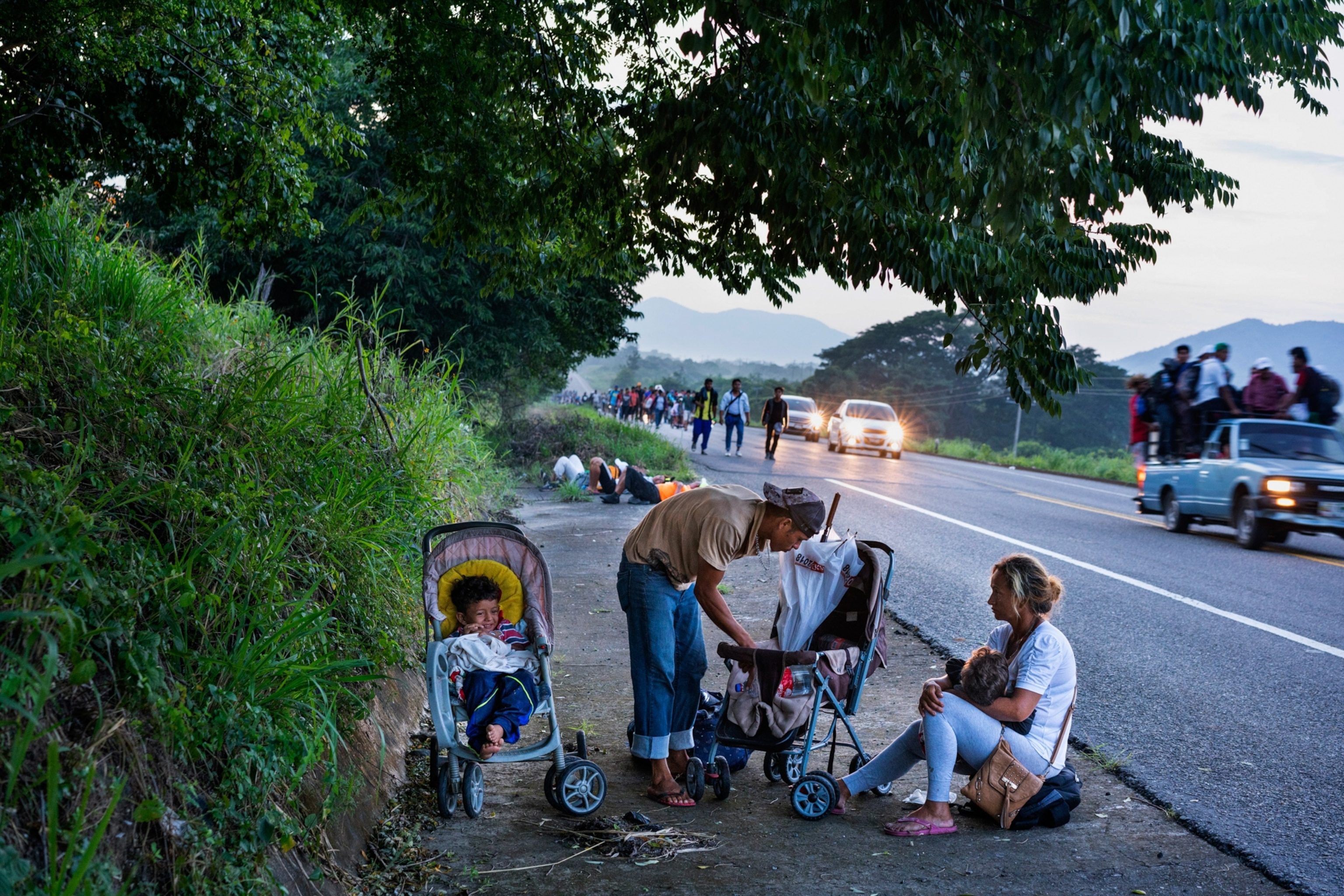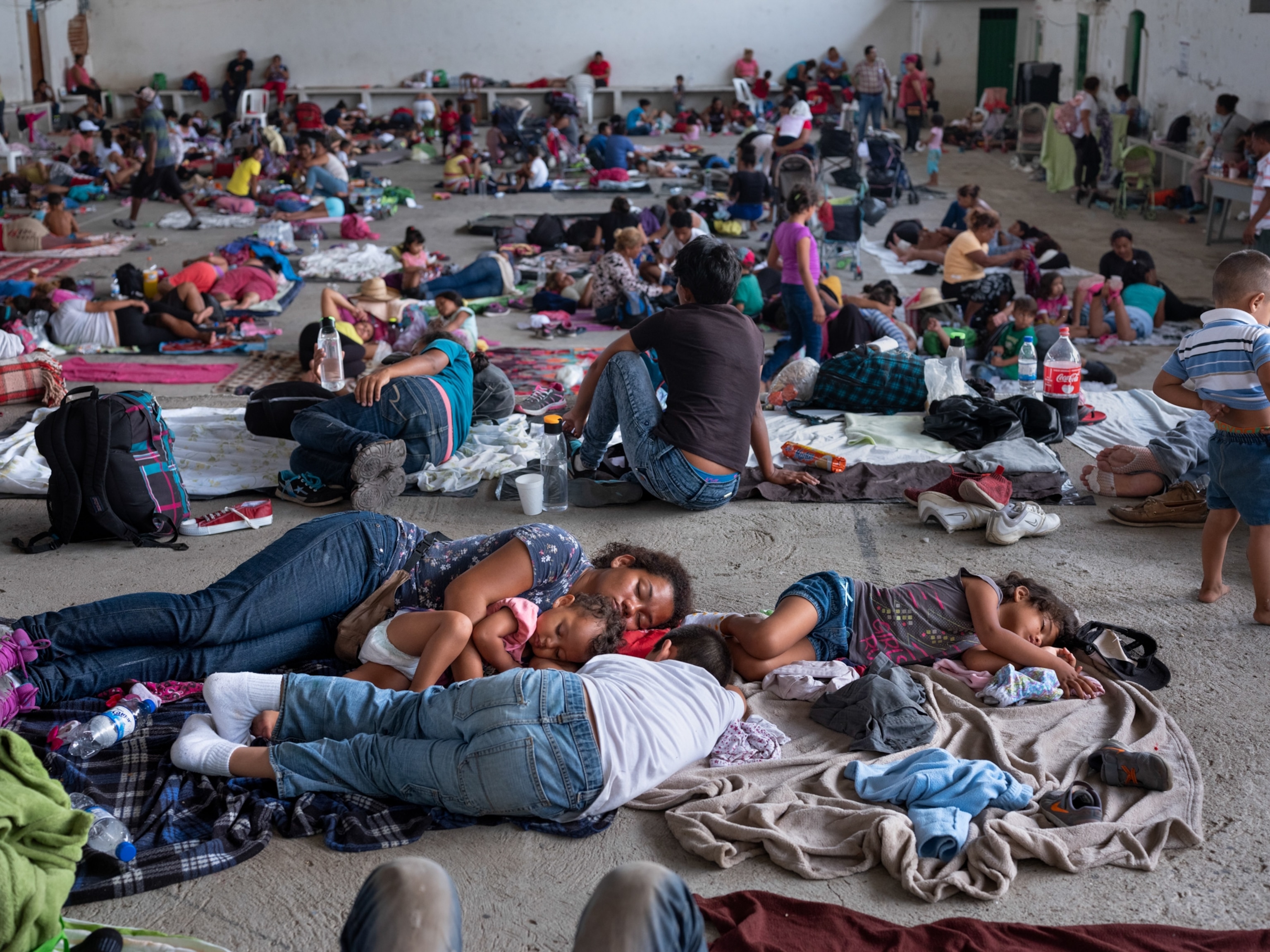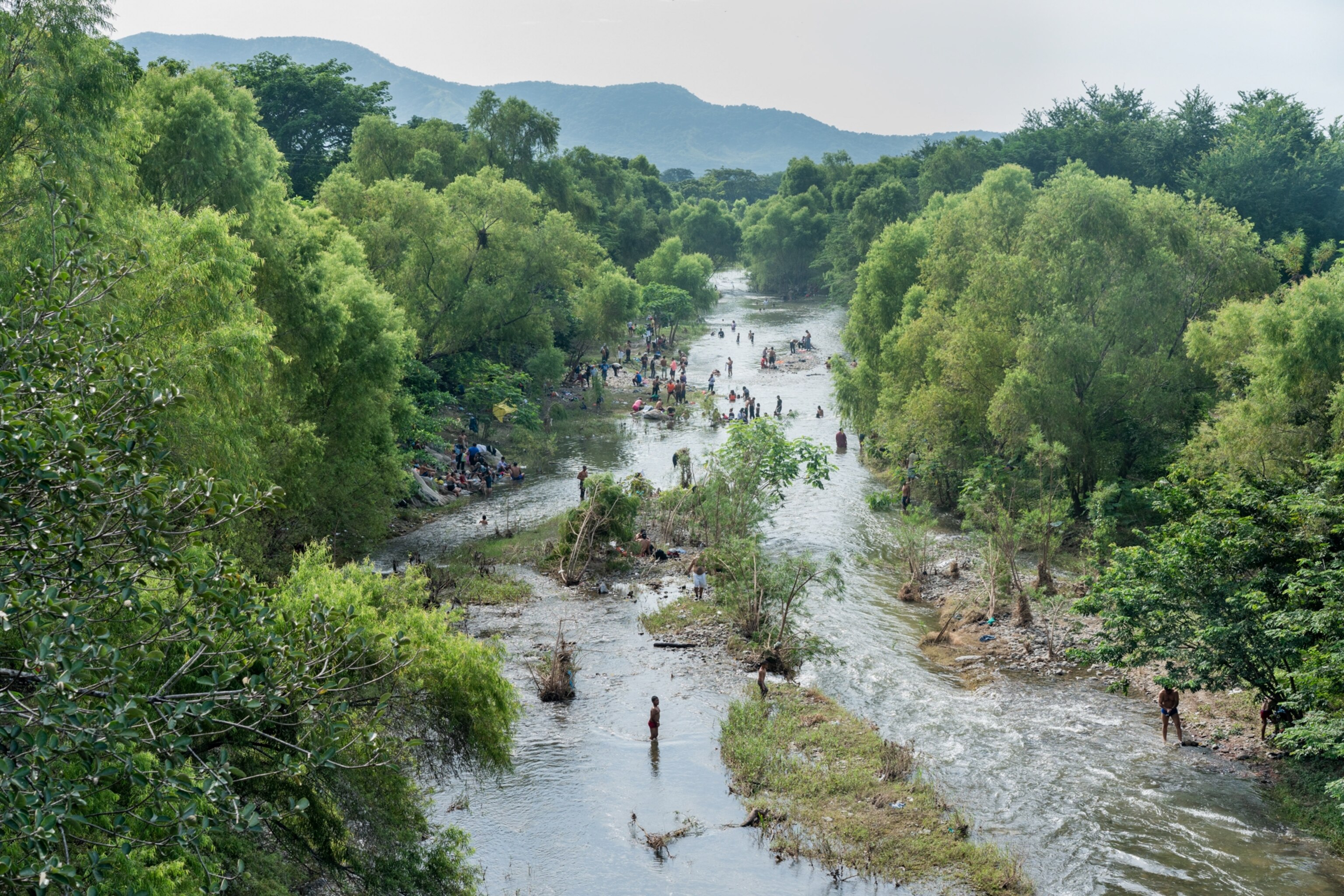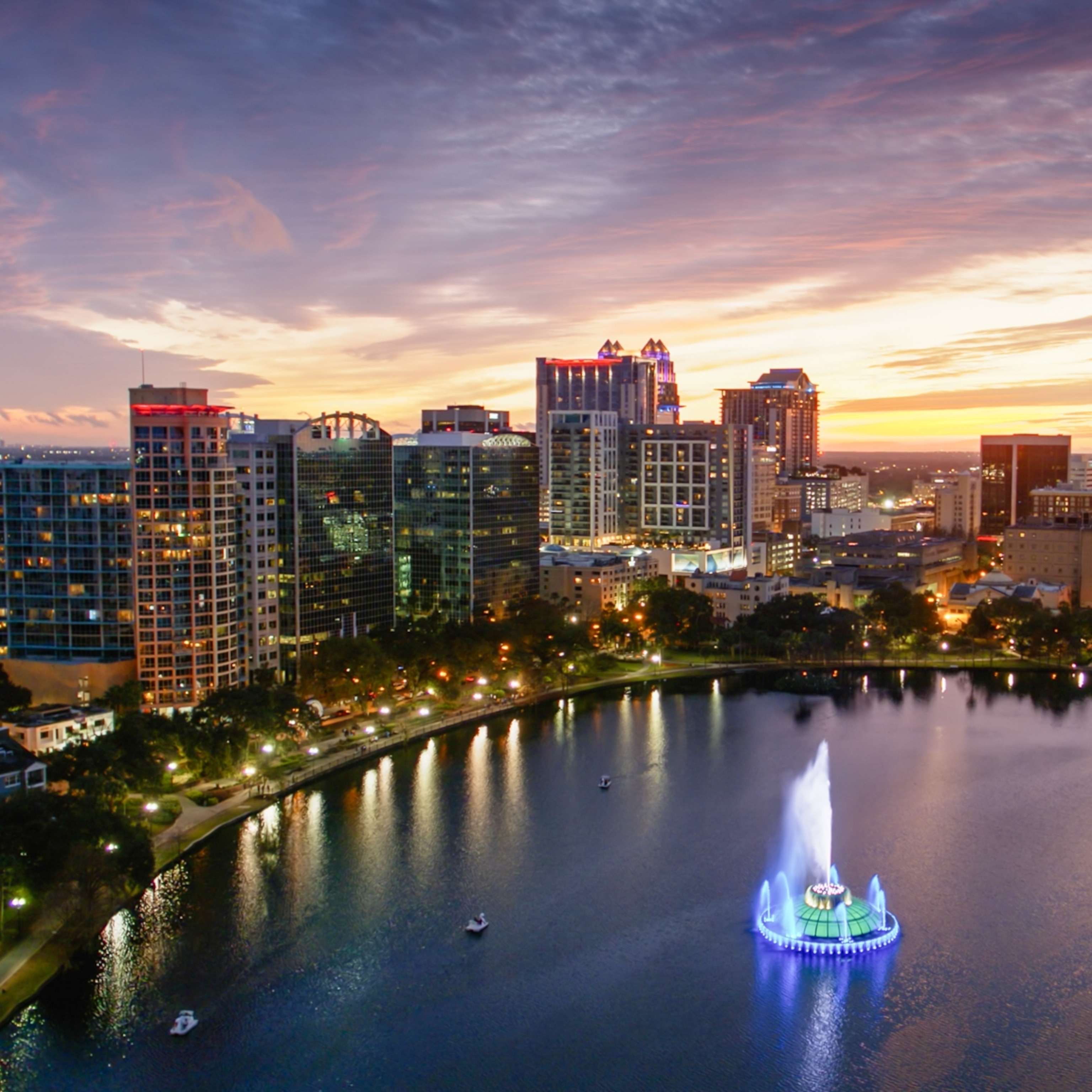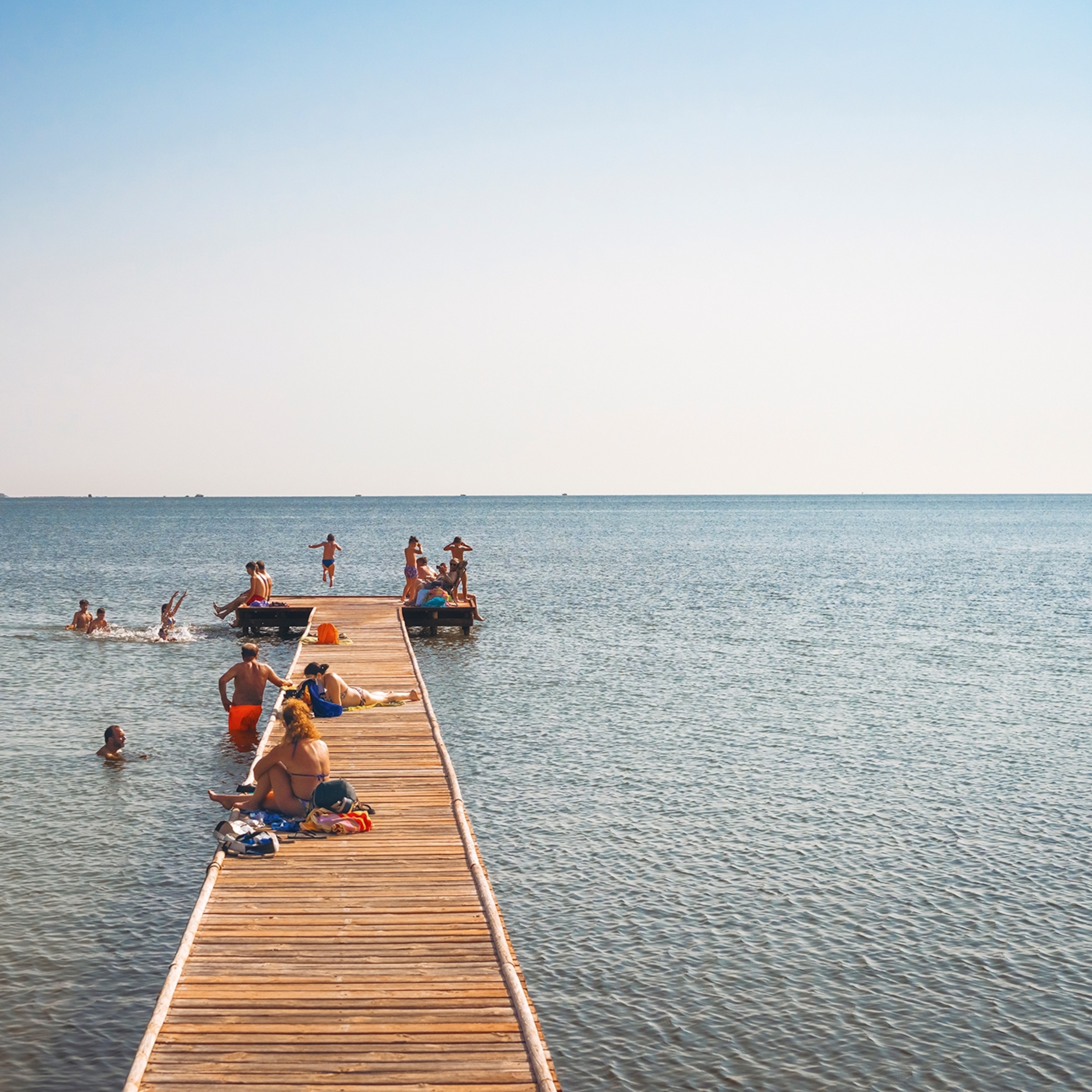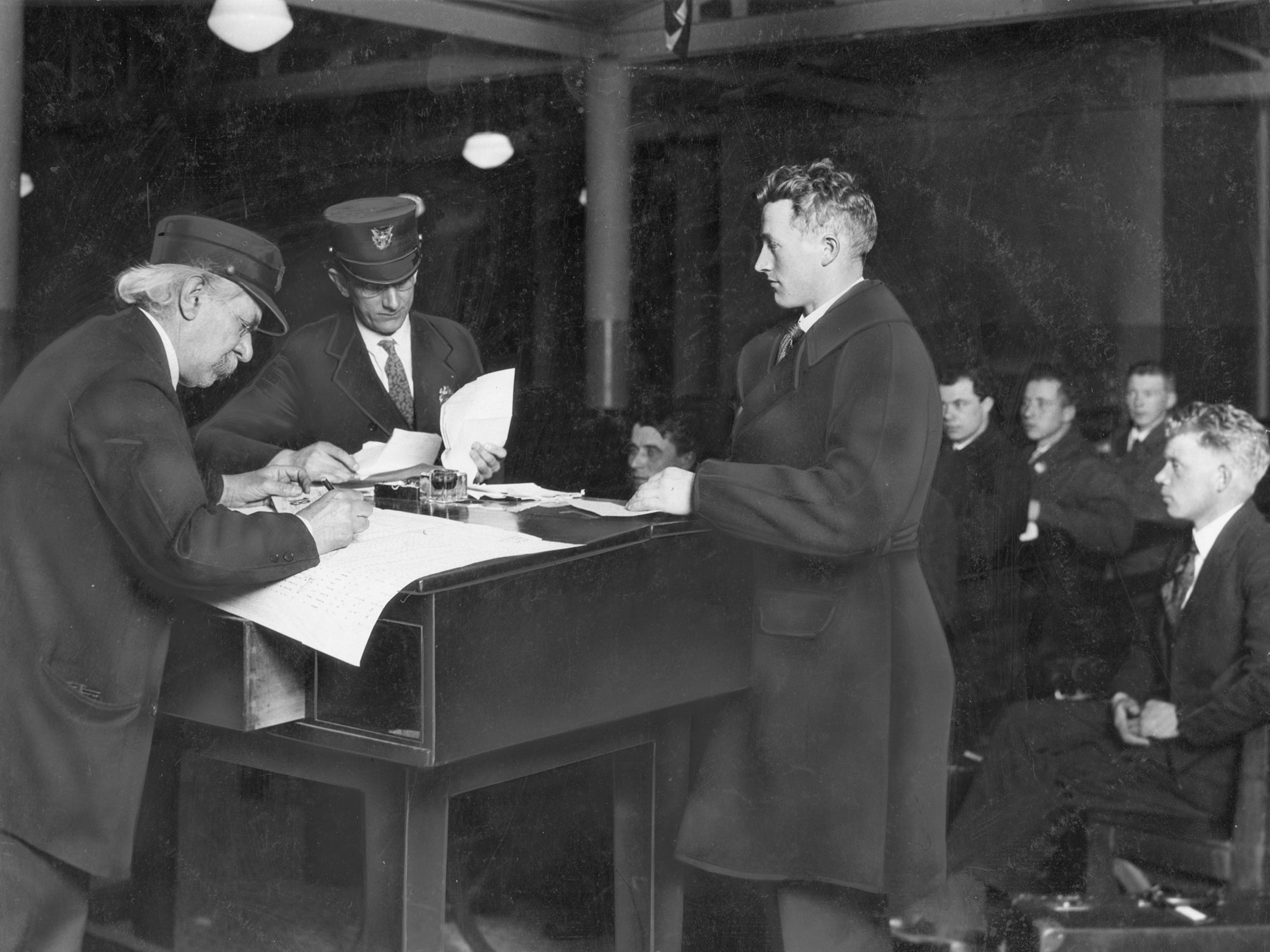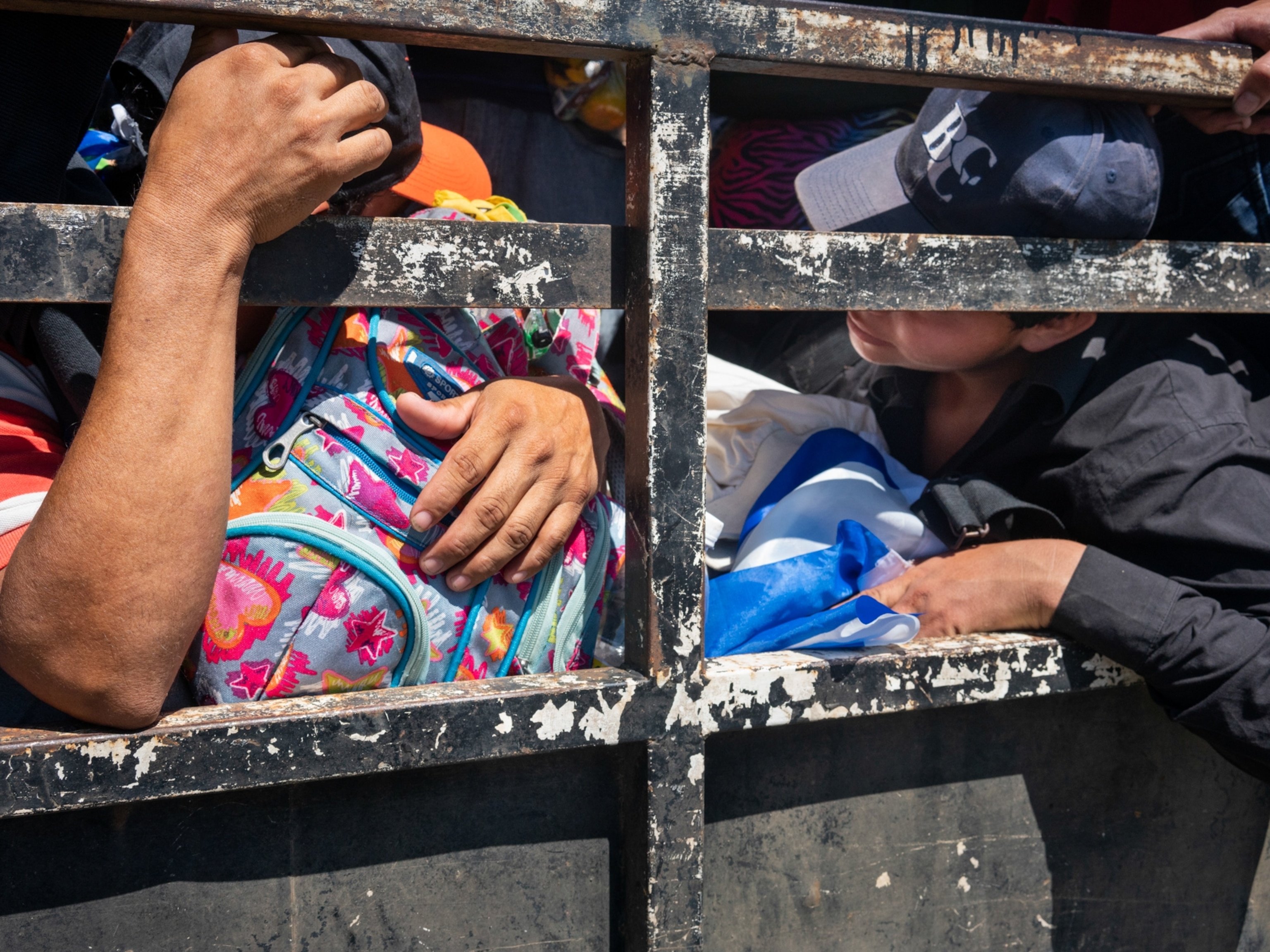Sandra dreams of attending college, but fears it’s impossible. The 17-year-old’s neighborhood, just north of San Salvador, is blocked on either end by gang territory. Getting to and from class would mean crossing gang turf early in the morning and late at night—a potentially deadly mission. So when Sandra heard that a migrant caravan was forming and a few of her friends were going, she thought she might join them. She could pursue her education beyond El Salvador, where the murder rate consistently qualifies it as the most dangerous place on Earth outside of a war zone.
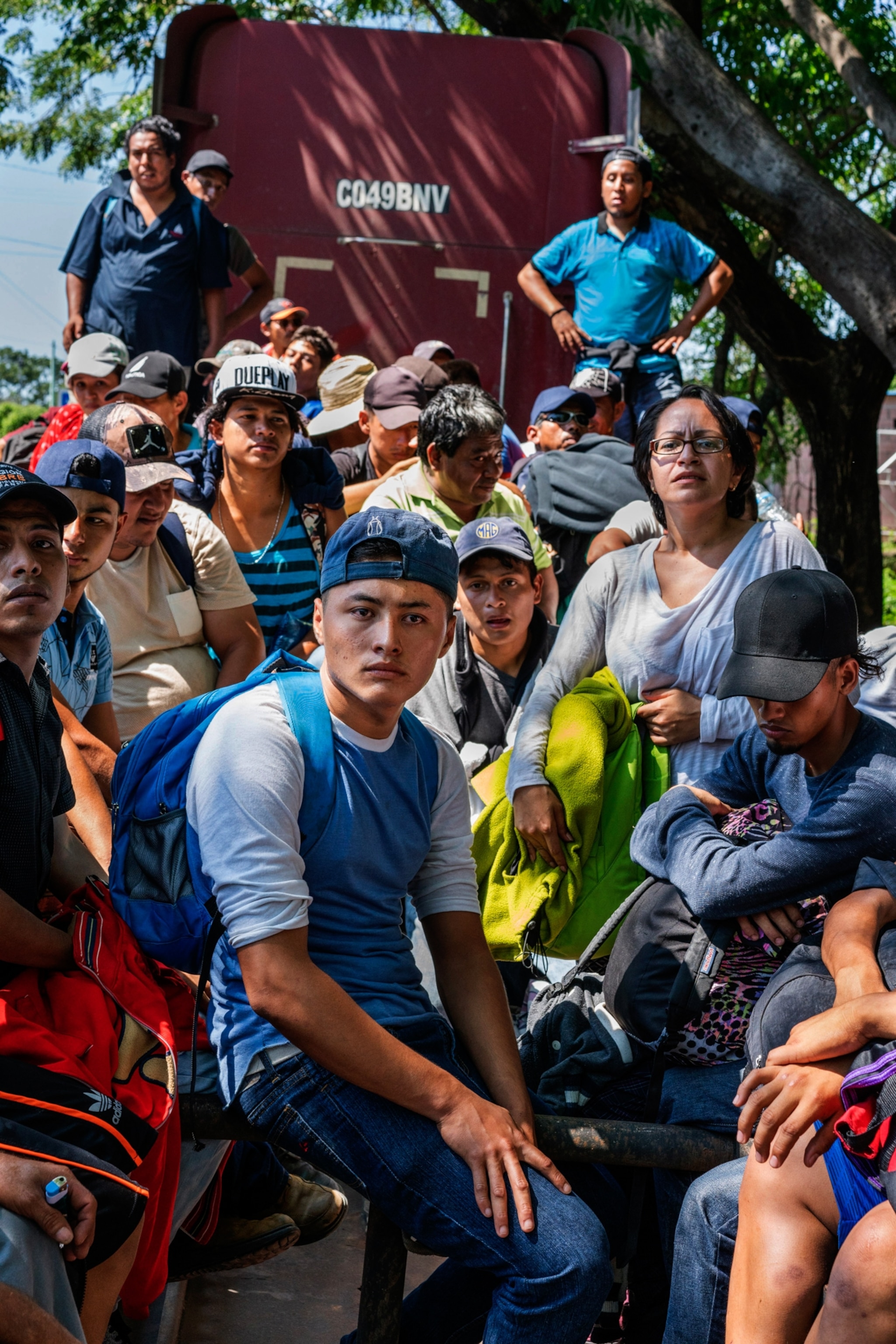
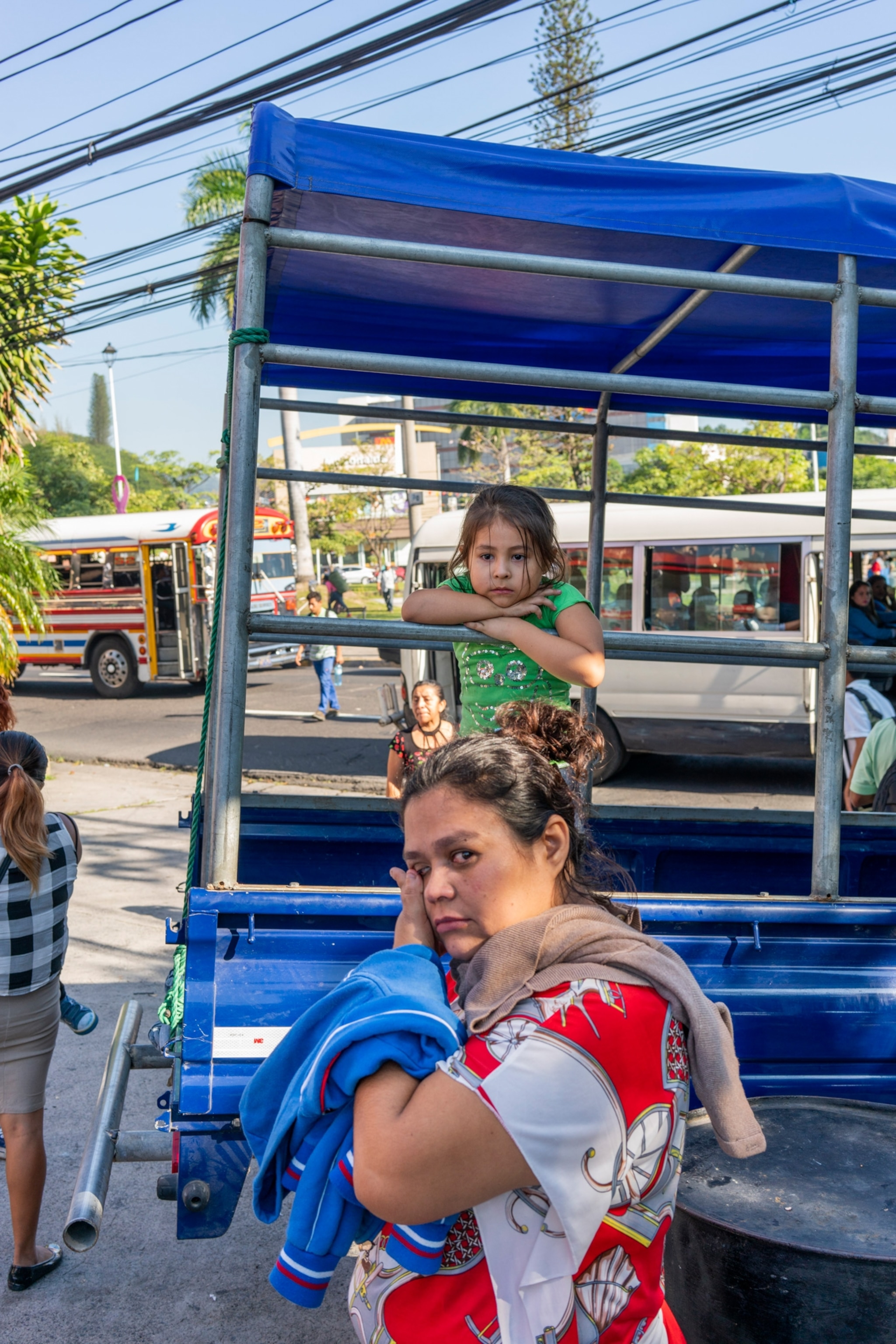
At an outdoor prayer service to bless those departing, Sandra stood, head bowed, clutching a candle. “Father we bless this immigrant caravan,” Lutheran pastor Rafael Salaverria murmured into a microphone, as highway traffic blared past the overgrown plaza. “They are fleeing on an exodus. Father they need you. We not only pray, we ask you to inspire us so we walk with them.”
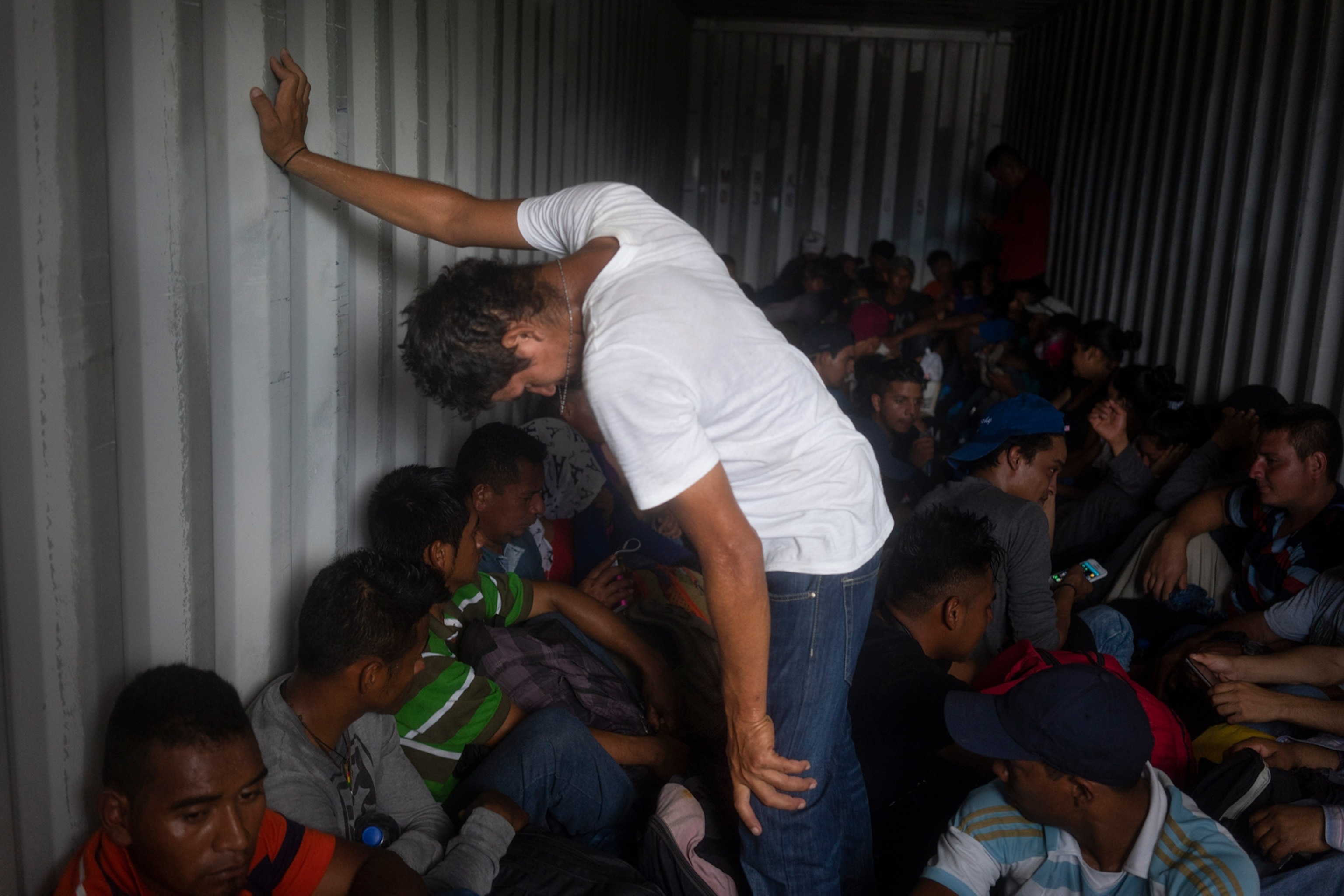
As churchgoers prayed, word spread on dozens of WhatsApp groups that some would gather late Tuesday to camp overnight in El Salvador del Mundo, a roundabout decorated with a statue of Jesus atop a globe, and some would arrive early Wednesday morning. They’d leave at 9 a.m. The plan had circulated for more than a week on social media, and with it a promise of egalitarianism: Remember, there are no leaders, there are no coyotes, there are no financiers, a message repeated in all the groups. We are supporting each other as the Salvadoran brothers that we are.
When Sandra told her parents her plan, they forbade it. “I don’t have the courage to leave them,” she typed in a WhatsApp message the night before departure. “They are everything to me.” She would stay home—as a caravan of some 2,000 people set off on foot toward the U.S. border, at least 1,300 miles away.
For weeks Salvadorans have followed the news as a group of more than 7,000 immigrants walked, swam, and hitchhiked from neighboring Honduras toward the United States. They’ve listened as President Trump threatened to send as many as 15,000 troops to shut down the U.S.-Mexico border and prevent the Honduran caravan from entering. Still, with few options for a better future in El Salvador, they chose the caravan.
When the sun set on the Tuesday before departure, groups of people from across the country had filtered into the plaza, to spread out blankets along the tiered lawn and rest against their backpacks. Maps and snacks were passed around, and people studied the route north. Some had decided just days ago to join, thinking that the chance to travel without paying thousands of dollars to a coyote smuggler may not come again. And so they packed a small bag—three changes of clothes, identity documents, money, and medicine, as recommended in the WhatsApp groups. Few brought photographs, mementos from home, or anything more than the necessities.

With a journey of unknown length and hardship before them, many left their children behind, saying they could only justify risking their own lives. Eliezer Javier, just a toddler, won’t remember his mother Marilyn dropping him off at his grandparents’ house on Tuesday afternoon. Marilyn’s mother told her not to worry; Marilyn promised her little brother that she’d send money so he could finish school, as she hadn’t done. She and her boyfriend plan to go to Houston, where her boyfriend’s grandmother lives, but until Tuesday they hadn’t looked at it on a map. “If I make it, I’ll never come back,” Marilyn said, clutching a juice box and granola bar that someone was distributing.
The origin story of El Salvador’s caravan is hazy. “It’s a ghost,” said one immigration official about the organizers. But one clue lies in a quaint town an hour east of San Salvador. In early October, as Carlos watched the Honduran caravan make its way north, he chatted with a group of Facebook friends about the future. It’d been a year and a half since a local gang showed up at his family’s bakery and forced him into a car. His ex-girlfriend, the mother of his child, had started dating the gang leader, sparking a potentially deadly rivalry. The threats and beatings hadn’t stopped since then.
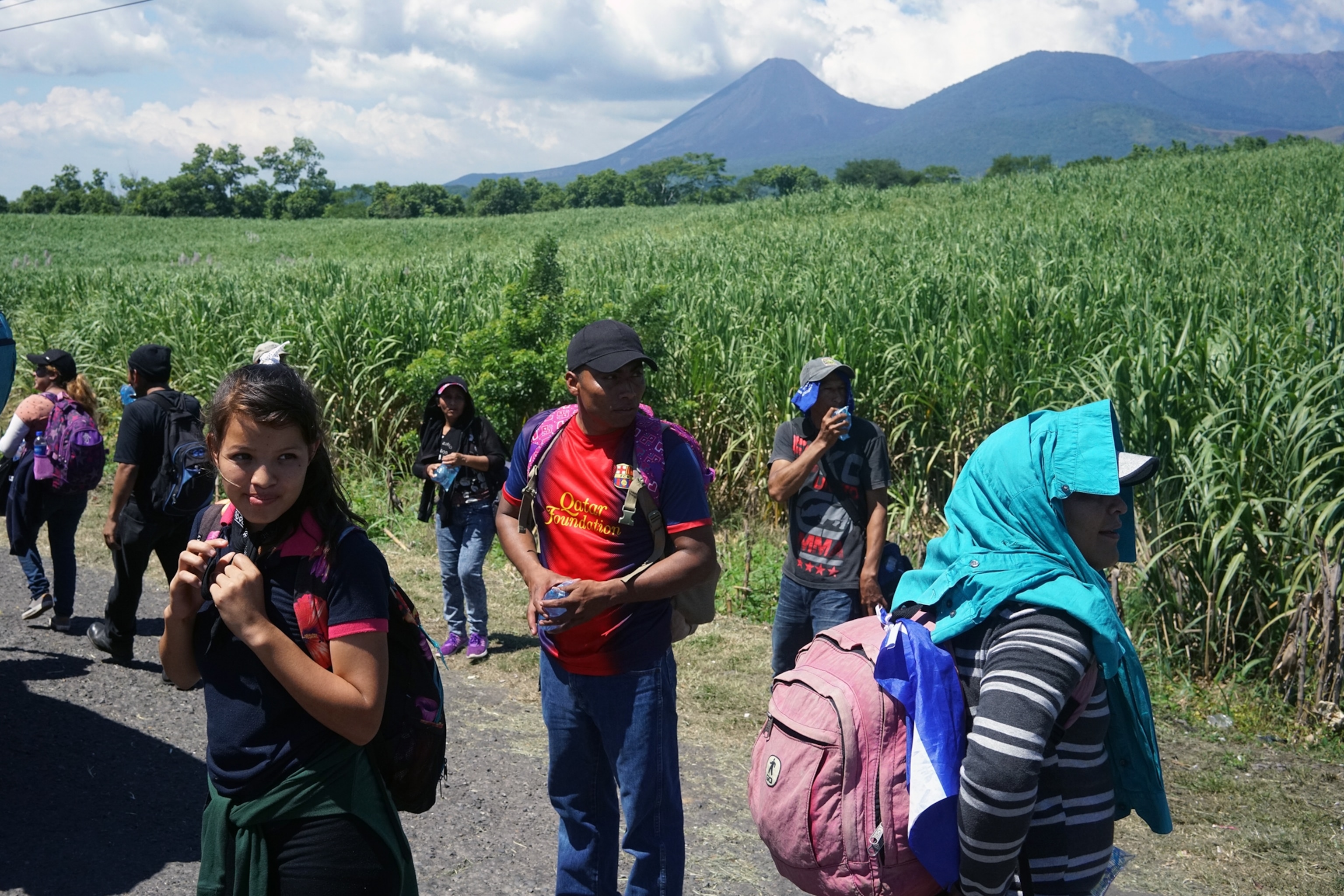
“I’m not going to stand still and wait for them to kill me,” Carlos told his mother. His friends started talking: What if they made their own caravan at the end of the month? From there, he said, word spread: new WhatsApp groups formed as old ones reached their member limit. Now, as many as 30 groups connect different regions of the country. Hundreds of messages an hour deliver a flurry of logistical coordination, news articles, prayers, and inspirational quotes.
On Carlos’ last day in El Salvador, his two-and-a-half-year-old daughter Melanie played games on her father’s phone and made change for customers buying pastries from the case outside their home. The news from the Honduran caravan had turned ugly, with tear gas and rubber bullets used on the Mexico border, and his mother begged him to think about the birthdays and Christmases he’d miss with his daughter. But Carlos felt there was no other choice. “What good am I going to do when I’m dead? With this decision I have a way out and an opportunity to change my daughter’s life.” Before sunrise the next morning, Carlos didn’t wake her to say goodbye before slipping out to catch a bus to San Salvador. If he makes it to the United States, he won’t return to El Salvador.
Just after 8 a.m. Wednesday in the El Salvador del Mundo plaza, someone stood up, yelled to the group, and the exodus began. Hundreds of people wearing backpacks and carrying little more than a bottle of water followed a road out of the traffic circle and headed west from the center of San Salvador. Passing cars threw baggies of water and school kids in black-and-white uniforms pressed their faces against window screens and shouted encouragement: Good luck! God bless you!
The group trundled along the edge of Monseñor Romero Highway, named for the outspoken priest who was killed in 1980 by a death squad and recently declared a saint. Semi-trailer trucks and pickups pulled up along the shoulder, and fresh cheers rang out as passengers hopped on. Before midday the group had splintered, but was on its way to Guatemala.
Holding on to her 12-year-old son with one hand and 14-year-old daughter with the other, Beatrize climbed into the back of a Maersk box truck and sped off toward the Guatemalan border. Any breeze from the open door was lost as more and more people were pulled aboard along the way, and the air grew thick with heat. Beatrize said she and her kids locked everything inside their house and left before dawn to join the caravan. The situation in the country, she said, is so dangerous that no talk of family separation or soldiers on the border would prevent her from bringing her kids.
Josué stood leaning against the truck wall, drenched in sweat and clutching a purple Jansport backpack. The 22-year-old factory worker had spent six months in detention centers in Texas and Georgia in 2016, including days freezing in the notoriously cold “ice box” holding facility. This time, he plans to stay in Mexico to work before trying again to cross the border. Early Tuesday morning he’d been posting encouraging messages in the WhatsApp group: “We Salvadorans don’t know what fear is,” he wrote, with a line of sunglass-wearing emojis. Before leaving he had tucked in two photos of his mother into his wallet.
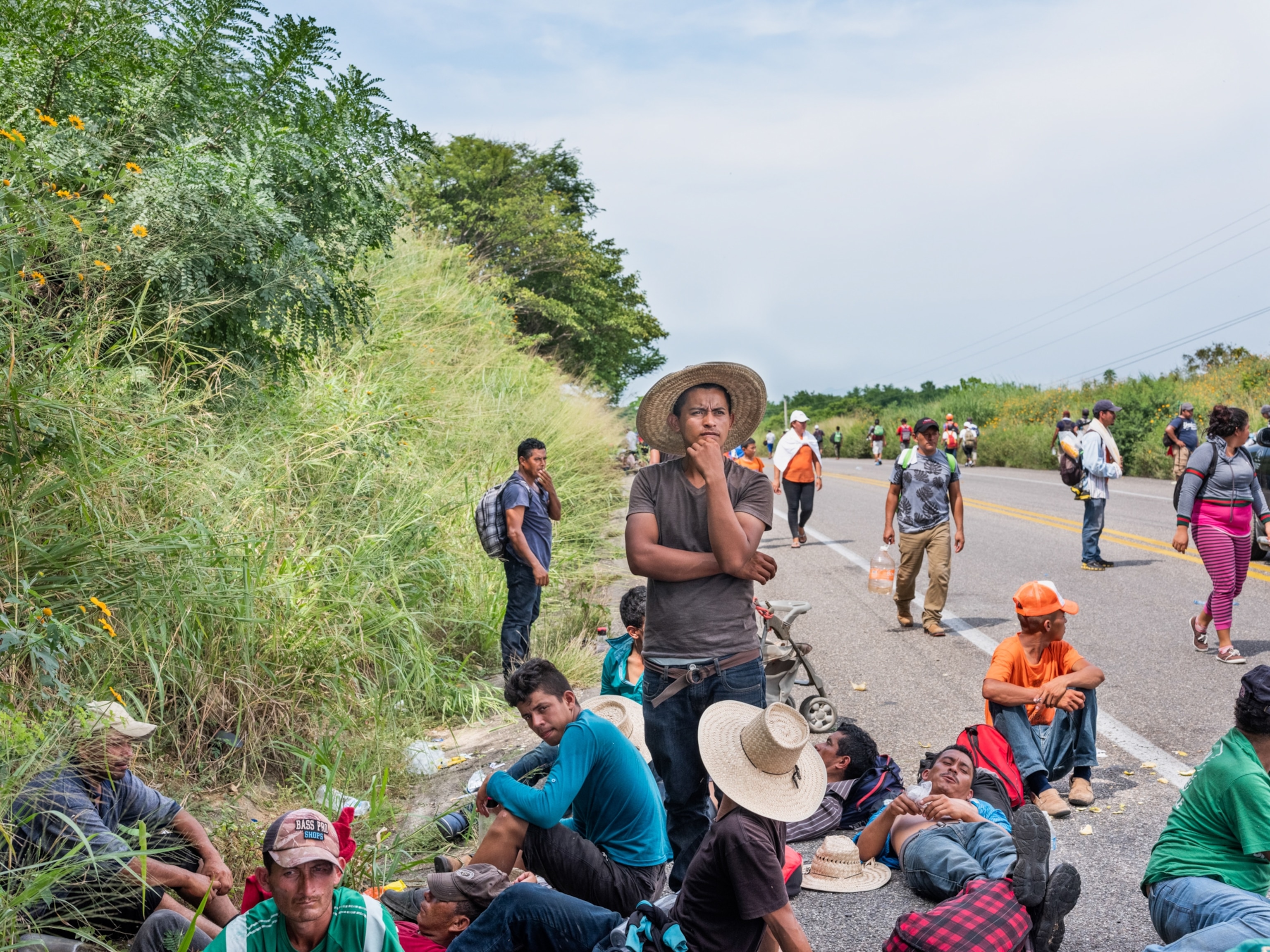
At an exit near where the highway heads north into Guatemala, the truck stopped and passengers jumped down to look for their next ride. Perched on the back of another truck packed with migrants is Herbert Hernandez Arce, the director of El Salvador’s immigration control. He yells over the noise, listing dangers the passengers might face after they leave the country: robberies, kidnappings, human trafficking. “They’ve been fooled into the notion that this is a free trip,” he said after disembarking the truck. “In this country nothing is free.”
By the early afternoon, a line of people snaked around the low-slung buildings on the Guatemala border waiting for their identity cards or passports to be checked. Truck drivers are the usual clientele at a crossing not far from the Pacific coast, but on Wednesday this border was prepared for 500 people. No visas were needed, only identification cards, but the test will come at the border of Mexico. Two weeks ago police clashed with the Honduran caravan, forcing them to wade across a river into the country. Since, Mexico has allowed new immigrants to pass.
A half-mile beyond the border, with the first of three crossings complete, clusters of Salvadorans settle into a small park for the night. Kids played on the seesaw and adults rested against their backpacks, discussing the caravan’s singular goal: to congregate at the Mexican border, 200 miles away, by Friday. A young man in a striped polo shirt stepped onto a small concrete post to announce the schedule for the next day: a 3 a.m. departure on hired buses will take them to the next town, two hours north. “Through unity we have strength,” he said, sensing how fractured their plans could become with days of walking and hitching ahead. “Don’t separate. Don’t leave the group.”
But as night fell, part of the group decided to push on. They picked up their backpacks and started walking, eyes on the road for a ride going north.
Only first names have been used to protect the subjects’ identities.

